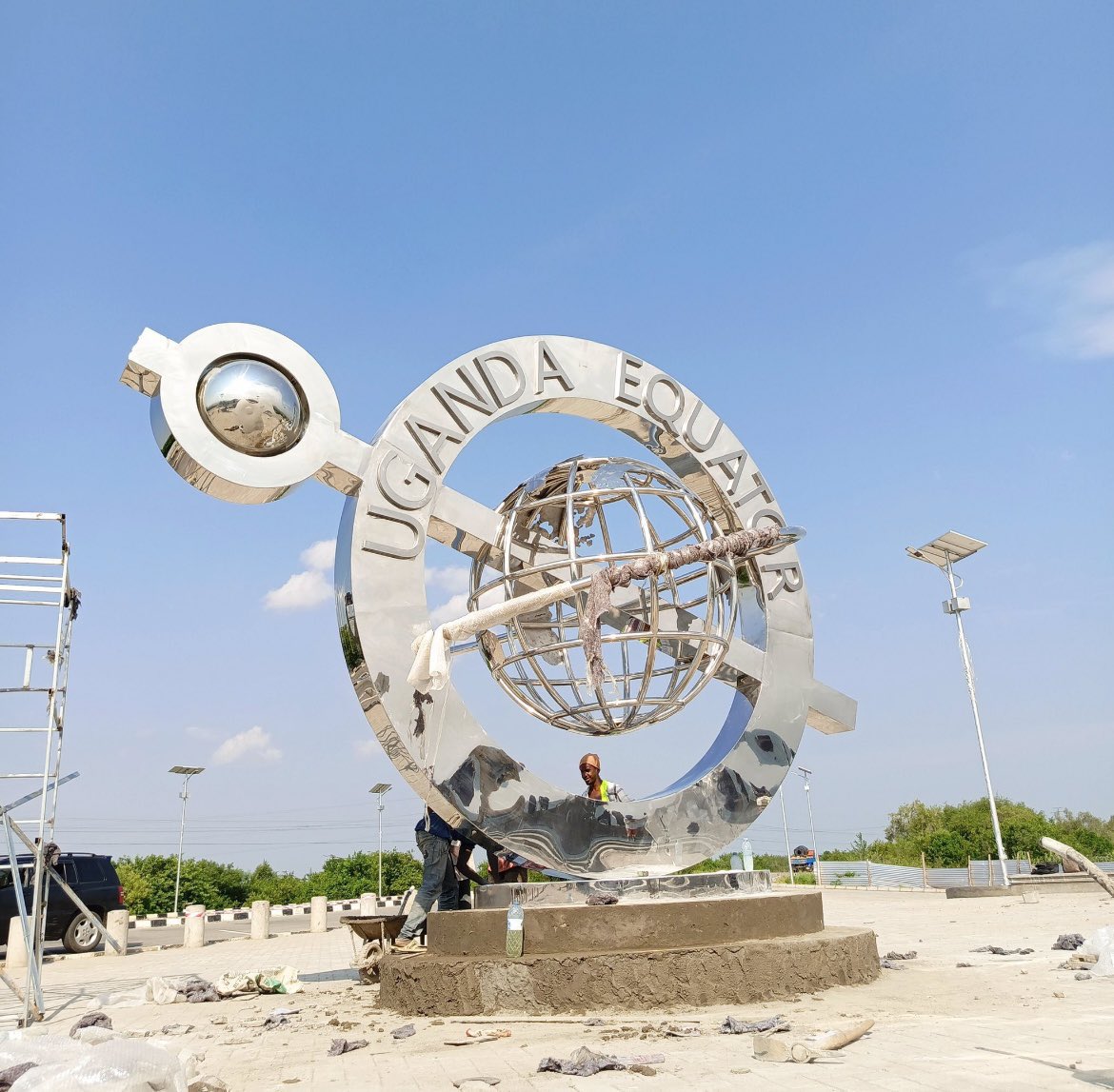Prime
New Kasese Equator monument to boost regional tourism

Beyond its visual appeal, the monument integrates seamlessly into Uganda’s green and mountainous landscape
What you need to know:
- The revamped monument aims to attract more visitors, encouraging them to pause for a memorable photo opportunity before continuing their journey to Queen Elizabeth and Mount Rwenzori National Parks among other tourist destinations in the Rwenzori sub-region.
- Beyond its visual appeal, the monument integrates seamlessly into Uganda’s green and mountainous landscape.
- The site includes cultural displays, a coffee shop, and craft shops, making it a multifaceted attraction.
- These features not only provide visitors with refreshments and souvenirs but also offer a glimpse into the rich cultural heritage of the region.
Over the years, the Kasese Equator Monument - located in Queen Elizabeth National Park - has seen a remarkable transformation.
Originally erected in 1952 by the colonial government and commissioned by Queen Elizabeth II of England, the first monument was a simple circular structure. This design highlighted the equator as a great circle, an imaginary line that divides the Earth into two equal parts, the Northern and Southern Hemispheres.
In March 2019, during the widening of the Katunguru-Hima road, the old oddly shaped monument, which had failed to captivate the interest of passersby was pulled down. In its place was a PVC banner, which according to Steven Gonzaga, a tour operator and Team lead at Akiiki Holidays has been embarrassing.
Then, according to a statement from the Ministry of Tourism, Wildlife and Antiquities, the dismantling of the monument was inevitable since it has been standing in the dimensions of Kikorongo along the Katunguru-Hima Road.
Doreen Katusiime, the permanent secretary in the Ministry of Tourism then then promises that a new monument would be reconstructed with a bigger landscape and an extended parking to give a better life experience for both local and international tourists within six months.
Almost five years later, a new yet to be commissioned structure welcomes you to Queen Elizabeth National Park.
Designed by Eric Prince Ondia who won the Joadah Innovation Challenge under the category ‘Best Equator Monument’, the new monument is made of stainless steel and ‘elegantly showcases the globe with the equator line prominently dividing it.’
Beyond its visual appeal, the monument integrates seamlessly into Uganda’s green and mountainous landscape. The site includes cultural displays, a coffee shop, and craft shops, making it a multifaceted attraction. These features not only provide visitors with refreshments and souvenirs but also offer a glimpse into the rich cultural heritage of the region.
The inspiration behind the new monument stems from the desire to enhance Uganda’s tourism appeal and to match the impressive landmarks found in neighboring countries such as Rwanda. Masaka, a busy business hub, also influenced the development of the new design, underscoring the need for modern and attractive tourist destinations.
For the local community, the monument is more than just a visual attraction. It represents a significant boost to the local economy by drawing tourists, creating jobs, and stimulating business opportunities. Visitors are offered a unique experience that combines natural beauty, cultural enrichment, and commercial activities.
To ensure the monument remains an iconic and well-maintained site, a comprehensive management plan has been implemented. Ample parking space has been created away from the main road to prevent future disruptions. Additionally, a restaurant will be established, managed by park rangers by Uganda Wildlife Authority, to offer consistent services and maintain the site’s cleanliness and order.
According to the Commissioner in Charge of the Department of Museums Jackie Nyirachiza Besigye, the monument will benefit all Ugandans.

“It’s a big attraction, and the more tourists we get, the faster the nearby towns will grow. Local communities will definitely benefit. The Equator is already a great attraction, and we hope the concessionaire will add more facilities soon to make it a full stop center. The government has invested in the monument, and the private sector will handle other investments.”
During the construction of the new Kasese Equator Monument, many challenges were faced. Initially promised to be completed within six months, the project extended to nearly five years. Despite these delays, the final result exceeded expectations, presenting a modern and sophisticated landmark that has quickly become a symbol of pride for the region.
Muhindo Joshua, the director of Nzoghu Heritage Safari Camp in Kikorongo says as people in the tourism industry, the numbers of people crossing over to the side of Kikorongo had slightly reduced.
This is mainly because ever since the monument was removed people just drove through without stopping because they had no reason to.
“We believe that now that we have a new dot com innovation, tourists will stop for a while in Kikoringo and support local businesses by buying a snack or having a sleepover. This is important to us as investors and proprietors,” Mr Muhindo said.
Gonzaga believes the new design of the equator has come at the right time and ‘is best landmark we currently have in Uganda’.
The new structure is an addition to the must visit sites in Kasese. The structure design is a symbol of “Modern Style” with an aesthetic appeal and for domestic tourists, this is what they want. I strongly believe that many Ugandans have planned a visit to the equator after its refurbishment and this will lead to increased tourism in Kasese and Queen Elizabeth National Park.
The unveiling of the new Kasese Equator Monument has significantly contributed to the tourism industry in the region. As a new tourism product, it attracts travelers thereby expanding the tourism value chain. The monument not only highlights Uganda’s geographical significance but also enhances the country’s reputation as a must-visit destination.
Other Equator Landmarks
Kayabwe Point: Located on the Kampala-Masaka Highway, this is perhaps the most famous equator crossing in Uganda. It has long been a favorite stop for tourists who want to take photos and buy souvenirs from local vendors. Kayabwe Point is well-developed, with various attractions and facilities for visitors.
Equator Island on Lake Victoria: This lesser-known spot is situated on an isolated island in Lake Victoria, near Entebbe. It offers a more secluded and tranquil experience for those looking to explore the equator in a less commercialized setting. The island’s serene environment provides a perfect backdrop for reflection and appreciation of this natural phenomenon.



